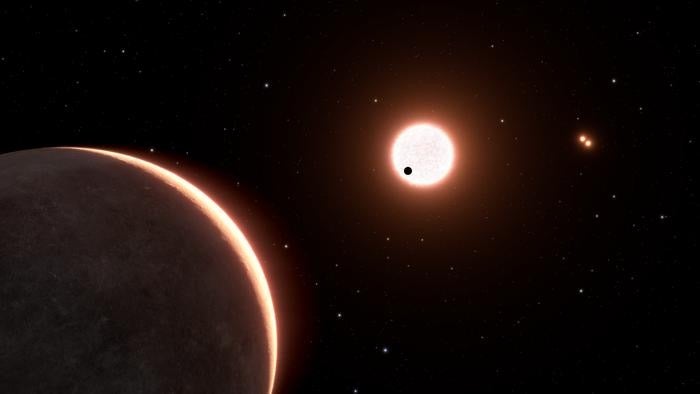
In 2022, NASA’s Transiting Exoplanet Survey Satellite (TESS) detected a planet orbiting a red dwarf star located 22 light-years away in Eridanus. When the planet, designated LTT 1445 A c, was discovered, scientists could not initially determine its mass.
But recent studies indicate the planet may be approximately Earth-sized, making it a prime candidate for further study by the James Webb Space Telescope and other instruments. The current understanding is that this curious exoplanet has a mass about 1.5 times that of Earth, and a diameter about 1.1 times that of our planet, making it a so-called super-Earth, as planetary scientists categorize them.
Astronomers studying exoplanets, planets orbiting stars other than our Sun, employ a variety of methods to determine a planet’s location and some basic data, such as its size, density, orbital period, and so on.
A common method used to detect exoplanets is called the transit method. This involves detecting the miniscule dip in light which we receive from a planet’s host star when that planet passes in front of it. Think of how waving your hand back and forth in front of a flashlight reduces the shine across the room, but on a much different scale. Even massive planets are tiny next to their stars, and at a distance of light-years, the resolution required to detect the dip in light is enormous.
As such, a truly powerful instrument is required, which is where TESS comes in. This space telescope, launched in 2018, is designed to detect transiting planets (hence the name) and to study their characteristics.
But if an exoplanetary system is not aligned well so that we can see transits, data will be hard to collect. This was thought to be the case with LTT 1445 A c, where TESS recorded what scientists call a “grazing transit.”
Emily Pass, an astronomer at the Center for Astrophysics at Harvard University, says, “There was a chance that this system has an unlucky geometry and if that was the case, we wouldn’t measure the right size.” A planet’s mass (and approximate size) can be deduced with the transit method by taking the mass of its star and determining how much light the planet blocks, along with its orbital period. But without well-defined orbital characteristics, this is impossible.
Realizing limitations with the TESS data, Pass and her collaborators turned to another instrument, the Hubble Space Telescope. They used Hubble to make high-resolution observations that helped to determine the planet’s orbit was not a grazing transit. This allowed a much more accurate calculation of the planet’s diameter. This allowed the team to calculate the planet’s diameter at approximately 1.1 times that of Earth.
Because LTT 1445 A c orbits so close to its M dwarf star, its surface temperature is likely around 500° F (260° C), making it as hot as a pizza oven.
LTT 1445 A c offers an interesting target for future studies. “Transiting planets are exciting since we can characterize their atmospheres with spectroscopy,” says Pass. “We are looking forward to follow-on observations that will allow us to better understand the diversity of planets around other stars.”









